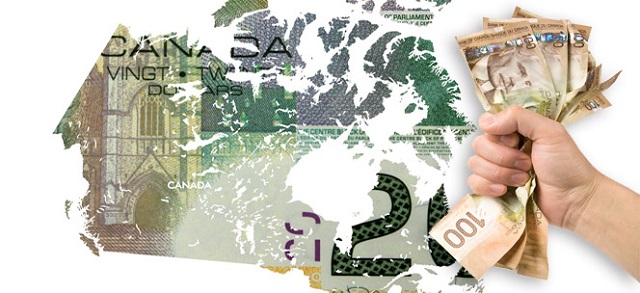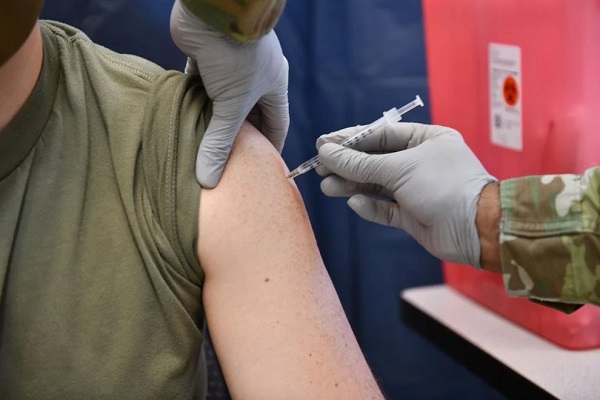Opinion
“US vs THEM” is an increasingly common philosophy today.

Councillor Handley mentioned that there was an atmosphere of “Us vs. Them” at the Westerner in regards to city hall. Partially deemed the reason for the Westerner’s financial plight.
Hospitals and schools seem to have the “Us vs. Them” in regards to the province. Covid-19 brought it to the forefront.
Alberta Premier seems to fan the flames of “Us vs, Them” in regards to Ottawa. Yet Ottawa has been doling money to Alberta in far greater amounts than the province. Pipelines and Covid-19 are 2 examples.
I can continue with all kinds of issues, like Molly Banister recently, the Aquatic Centre to name but 2 more.
With all these protectionist sectors battling each other, the fact that there is only one group of taxpayers paying for all of it, is forgotten.
Susan Delacourt wrote a column on Trumpism which thrived under the “Us vs. Them” political culture.
She included in her column;
“Frank Graves, the EKOS pollster who has been doing an intense study of populism and its potential to surface in Canada, was not feeling complacent at all as the results rolled in from the Nov. 3 vote.
Graves and Michael Valpy wrote a piece on the eve of the vote last week, and the conclusion of that article was a warning and a prediction wrapped up in four words: “Trump is still competitive.”
Quietly, methodically, Graves has been analyzing the component pieces of Trump’s appeal and what feeds the political culture of grievance that the president championed.
Much of Graves’ findings were published earlier this year in a paper for the University of Calgary’s public-policy school — a paper that should be required reading for any Canadians of the “it can’t happen here” way of thinking.
Graves has coined the phrase “ordered populism” to describe the Trump phenomenon and the paper’s summary describes it this way:
“Ordered populism rests on the belief in a corrupt elite, and the idea that power needs to be wrested from this elite and returned to the people. Oriented toward authoritarianism, ordered populism emphasizes obedience, hostility toward outgroups, a desire to turn back the clock to a time of greater order in society, and a search for a strongman type to lead the return to a better time.”
Does that type of politics exist in Canada? It sure does, Graves says, and it’s been on the rise for the past few years. His research says that view is shared by as much as a third of the population and its ascent is accompanied by increases in polarization, inequality and a decline in the middle class.”
The fact that we don’t have a true “Trump” populist strongman here does not mean the voters do not seek one.
Our Premier tried using Trump style tactics to benefit the rich oil companies and executives. Unfortunately he appears to operate solely for the few, his inner circle, the elite, and ignores the needs of the populace.
The taxpayers are constantly being told “NO”, yet it appears that there are the favored few who get everything. Public servants are being told they will be seeing a 4% cutback to their paycheque, but remember politicians, who voted themselves top up pay when their 1/3 tax subsidy ended. Home owners were deemed less important than the developer. Skaters seem more important than swimmers. Rich people need tax relief while poor people get benefits reduced.
Taxpayers in one area hear how in another area they are turning lemons into lemonade, but not here. I am talking about the county or Blackfalds , using low interest rates, low land prices, low bids to build now, at great savings, but the city says it can’t happen here. Why not? They found millions to suddenly renovate city hall. Why not look beyond their limited circle and ask? City vs. County? Red Deer vs. Blackfalds?
If the county can save $800,000 on a $2.9 million bid, could we not look to see if we could save at that ratio, $24 million on a $90 million Aquatic centre. The city keeps talking about ice rinks, life spans of current ice rinks, well the last pool we opened was 20 years ago. Do we have any plans to replace our aging swimming pools? Skaters vs, swimmers?
Again the list goes on and on.
Every where you go there seems to be the “Us vs. Them” mentality.
Perhaps we should support those who are contrarian to the wishes of the elite. Is there an updated Trump out there to lead?
Just asking.
Alberta
Alberta’s embrace of activity-based funding is great news for patients

 From the Montreal Economic Institute
From the Montreal Economic Institute
Alberta’s move to fund acute care services through activity-based funding follows best practices internationally, points out an MEI researcher following an announcement made by Premier Danielle Smith earlier today.
“For too long, the way hospitals were funded in Alberta incentivized treating fewer patients, contributing to our long wait times,” explains Krystle Wittevrongel, director of research at the MEI. “International experience has shown that, with the proper funding models in place, health systems become more efficient to the benefit of patients.”
Currently, Alberta’s hospitals are financed under a system called “global budgeting.” This involves allocating a pre-set amount of funding to pay for a specific number of services based on previous years’ budgets.
Under the government’s newly proposed funding system, hospitals receive a fixed payment for each treatment delivered.
An Economic Note published by the MEI last year showed that Quebec’s gradual adoption of activity-based funding led to higher productivity and lower costs in the province’s health system.
Notably, the province observed that the per-procedure cost of MRIs fell by four per cent as the number of procedures performed increased by 22 per cent.
In the radiology and oncology sector, it observed productivity increases of 26 per cent while procedure costs decreased by seven per cent.
“Being able to perform more surgeries, at lower costs, and within shorter timelines is exactly what Alberta’s patients need, and Premier Smith understands that,” continued Mrs. Wittevrongel. “Today’s announcement is a good first step, and we look forward to seeing a successful roll-out once appropriate funding levels per procedure are set.”
The governments expects to roll-out this new funding model for select procedures starting in 2026.
* * *
The MEI is an independent public policy think tank with offices in Montreal, Ottawa, and Calgary. Through its publications, media appearances, and advisory services to policymakers, the MEI stimulates public policy debate and reforms based on sound economics and entrepreneurship.
espionage
Hong Kong Detains Parents of Activist Frances Hui Amid $1M Bounty, Echoing Election Interference Fears in Canada

 Sam Cooper
Sam Cooper
In a deeply alarming escalation of transnational repression that echoes threats made against a Canadian election candidate, Hong Kong’s national security police today detained the parents of U.S. resident Frances Hui, a prominent Hong Kong democracy activist who previously testified before Canada’s Parliament about Chinese government harassment on Western soil.
Hui, who fled Hong Kong and was granted asylum in Washington, D.C., faces a HK$1 million bounty issued in December 2023 under Beijing’s sweeping National Security Law. She had warned Canadian lawmakers that the Chinese Communist Party was targeting overseas activists—including herself and others with Canadian ties—through intimidation, surveillance, and harassment campaigns executed by proxies abroad.
The detention in Hong Kong on Thursday, April 10, comes just one week after the U.S. State Department sanctioned six Hong Kong and Chinese officials and two days after a bill was reintroduced in Congress to shutter Hong Kong’s de facto embassies in the U.S. Hui’s advocacy played a major role in both moves.
Hui, the Advocacy and Policy Coordinator for the Committee for Freedom in Hong Kong (CFHK) Foundation, condemned the police action against her family as “emotional blackmail.”
“My parents and I have had no contact since I left Hong Kong in 2020,” Hui said in a statement. “The police arranged a crowd of media to photograph their exit from the police station—to humiliate them. This is a deliberate attempt to intimidate and silence me.”
The targeting of Hui’s family may intensify concerns in diaspora communities that the Chinese Communist Party is attempting to obtain multiple objectives, potentially sending a message timed to Canada’s 2025 federal election—especially after recent remarks from a former Liberal candidate in Markham–Unionville stoked widespread alarm.
Paul Chiang, who resigned last week amid an RCMP review into controversial remarks, had reportedly suggested that Conservative opponent Joe Tay—a Canadian citizen wanted under Hong Kong’s National Security Law—could be taken to the Chinese Consulate in Toronto to claim a bounty.
Chiang, a former Markham police officer who unseated longtime Conservative representative Bob Saroya to win Markham–Unionville for Team Trudeau in 2021, stepped down after the RCMP confirmed it was investigating his comments to Chinese-language media in January 2025.
On the latest threats to Hui and her family, CFHK Foundation President Mark Clifford said: “This is outrageous targeting of a young woman who has lived in the U.S. for the last five years and whose advocacy and freedom of speech is protected under U.S. laws. The CFHK Foundation will continue to support Frances and all those with the courage to speak out against the crimes being perpetrated in Hong Kong and the low-class bullies who perpetrate them.”
Earlier in Canada’s election campaign, which is quickly becoming marked by reports of Chinese interference, Tay, a former Hong Kong broadcaster whose independent journalism has drawn retaliation from Beijing, quickly rejected Chiang’s apology, calling it “the tradecraft of the Chinese Communist Party.” He added: “They are not just aimed at me; they are intended to send a chilling signal to the entire community to force compliance with Beijing’s political goals.”
As previously reported by The Bureau, Hui detailed her experience with transnational repression in testimony before Canada’s Subcommittee on International Human Rights. She recounted how she was targeted by a naturalized U.S. citizen—now under federal indictment in Massachusetts—who allegedly spied on dissidents for the Chinese government.
“Between 2018 and 2022, this individual spied on members and leaders of Boston-area Chinese family associations and community organizations, as well as anti-PRC dissidents,” Hui told the committee. “In one incident, he mobilized hundreds to harass us. I was followed home and had to call the police. I regularly receive phone calls from men speaking Chinese.”
Developing…
The Bureau is a reader-supported publication.
To receive new posts and support my work, consider becoming a free or paid subscriber.
Invite your friends and earn rewards
-

 2025 Federal Election15 hours ago
2025 Federal Election15 hours agoLiberals Replace Candidate Embroiled in Election Interference Scandal with Board Member of School Flagged in Canada’s Election Interference Inquiry
-

 Alberta14 hours ago
Alberta14 hours agoIs Canada’s Federation Fair?
-

 Alberta13 hours ago
Alberta13 hours agoProvince introducing “Patient-Focused Funding Model” to fund acute care in Alberta
-

 espionage16 hours ago
espionage16 hours agoU.S. Experts Warn Canada Is Losing the Fight Against PRC Criminal Networks—Washington Has Run Out of Patience
-

 Alberta9 hours ago
Alberta9 hours agoMedical regulator stops short of revoking license of Alberta doctor skeptic of COVID vaccine
-

 Automotive17 hours ago
Automotive17 hours agoTesla Vandals Keep Running Into The Same Problem … Cameras
-

 International10 hours ago
International10 hours agoUN committee urges Canada to repeal euthanasia for non-terminally ill patients
-

 COVID-193 hours ago
COVID-193 hours agoMassive new study links COVID jabs to higher risk of myocarditis, stroke, artery disease



